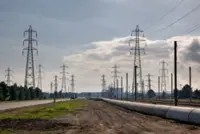The US government has offered US$3.5bil (RM15.5bil) in grants to build the factories that will capture and permanently store the gas – the largest such effort globally to help halt climate change through direct air capture (DAC) and expanded a tax credit to US$180 (RM796) per tonne to bolster the burgeoning technology. — Reuters
NEW YORK: The world is failing to cut carbon emissions fast enough to avoid disastrous climate change, a dawning truth that is giving life to a technology that for years has been marginal – pulling carbon dioxide (CO2) from the air.
Leading the charge, the US government has offered US$3.5bil (RM15.5bil) in grants to build the factories that will capture and permanently store the gas – the largest such effort globally to help halt climate change through direct air capture (DAC) and expanded a tax credit to US$180 (RM796) per tonne to bolster the burgeoning technology.





